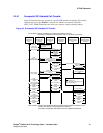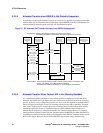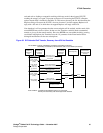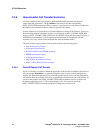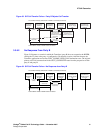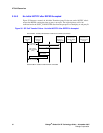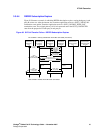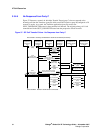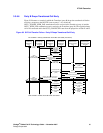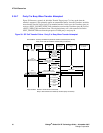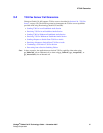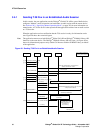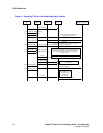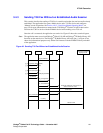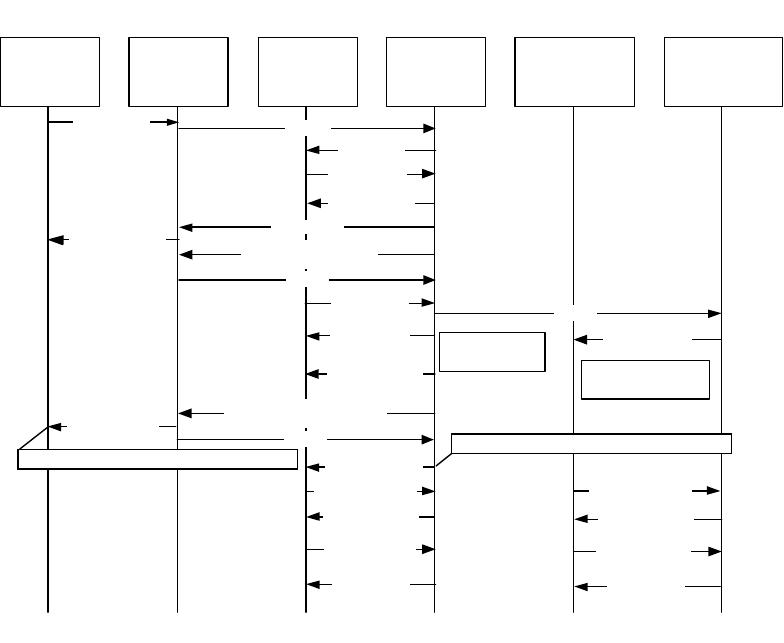
94 Dialogic
®
Global Call IP Technology Guide — November 2007
Dialogic Corporation
IP Call Scenarios
3.3.6.5 No Response From Party C
Figure 37 illustrates a scenario in which the Transfer Target (party C) does not respond to the
incoming call from the Transferee (party B) which causes the T4 timer at party B (configured as 20
seconds) to expire. As a result, the Transferee application (party B) receives the
GCEV_DISCONNECTED event for the transferred call timeout. The original primary call is left
connected and in the GCST_CONNECTED state from the perspective of both A and B.
Figure 37. SIP Call Transfer Failure - No Response from Party C
A
(Transferring,
Transferor)
App
A
(Transferring,
Transferor)
IP CCLib
B
(Transferred,
Transferee)
App
B
(Transferred,
Transferee)
IP CCLib
C
(Transferred To,
Transfer Target)
App
C
(Transferred To,
Transfer Target)
IP CCLib
GCEV_REQ_
XFER(CRNp)
Pre condition: Primary call between A and B is connected (not shown).
GCEV_DIALING
(CRNt)
GCEV_DROPCALL
(CRNt)
gc_ReleaseCallEx
(CRNt)
GCEV_RELEASECALL
(CRNt)
202 Accepted
GCEV_ACCEPT_
XFER(CRNp)
GCEV_
INVOKE_XFER_
ACCEPTED(CRNp)
NOTIFY(100 Trying)
Subscription-State=active; expires=300
200 OK
GCEV_XFER_FAIL
(CRNp)
REFER
gc_InvokeXfer
(CRNp)
INVITE
gc_DropCall(CRNt)
Parties A and B remain connected.
Post condition:
GCEV_OFFERED
(CRNt)
Cause = IPEC_SIPReasonStatus408 Request Timeout
gc_MakeCall
(CRNt, CRNp)
GCEV_
DISCONNECTED
(CRNt)
Network timeout
No response from C
NOTIFY (408 Request Timeout)
Subscription-State = terminated
200 OK
Cause = IPEC_SIPReasonStatus408 Request Timeout
GCEV_DROPCALL
(CRNt)
gc_ReleaseCallEx
(CRNt)
GCEV_RELEASECALL
(CRNt)
gc_DropCall(CRNt)
GCEV_
INVOKE_XFER_
FAIL(CRNp)
gc_AcceptXfer
(CRNp)




